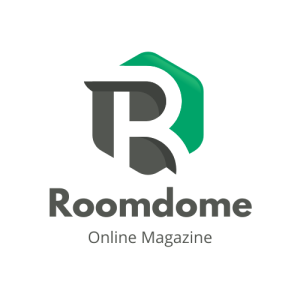Now that everyone’s talking about sustainable construction, there has been an increase in conversation about Design for Disassembly (DfD). DfD promotes the use of building materials beyond the lifecycle of the original installation. By applying DfD principles to the design process and the built environment, the products, materials, and components can be disassembled, reconfigured, or reused in another project.
What is Design for Disassembly in the Built Environment?
Coined in the 1990s, DfD is a core component of the circular economy business model that eliminates waste in landfills by introducing more materials and products into the “reduce, reuse, recycle” resource loop. DfD requires that the AEC industry understand the complete building lifecycle and create a plan to reuse the parts upon disassembly.
While the DfD concept is still relatively new, the EU Project Buildings as Material Banks (BAMB) and the EPA (US Environmental Protection Agency) have established guidelines for the DfD process. Since the built environment is responsible for 39% of global energy-related carbon emissions, DfD can significantly reduce the demand for new materials and their related energy usage. Additionally, several sustainability certifications award points for incorporating DfD into the design process.
Five Considerations for Design for Disassembly
The earlier DfD strategies get implemented into the product or building design process, the greater the future benefits and savings. Most disassembly occurs during either the Use Stage (via repairs, maintenance, or component replacement) or the End-of-Life stage (reuse, reconfigure, remanufacture, and recycle).
The following DfD strategies1 can improve the tangible recovery where the products or materials have a monetary value and non-tangible recovery where the products provide environmental benefit with no economic value.
1. Material Homogeneity
- Use only water-soluble adhesives.
- Use adhesives compatible with the materials being joined.
- Use snap fits, joints, or screws instead of soldering, brazing, glue, and welding.
2. Sequencing Disassembly
- Identify separation points.
- Logically group components by the materials used.
- Provide standard and permanent identification for different product materials.
3. Effects of Fasteners
- Reduce the number of fasteners and connectors used.
- Use easy-to-remove fastener types made from the same or compatible materials.
- Standardize fasteners used throughout the product.
4. Material Health
- Minimize the length and number of wires/cables used.
- Avoid the use of environmentally hazardous materials.
- Use molded-in colors or finishes instead of paint, plating, and coatings.
5. Reduce Time/Cost
- Locate snap and fastening points where they are accessible using standard tools.
- Use joining elements that are easily separable, easy to remove, or break free.
- Use two-way snap fits or breakpoints on snap-fit connections.
- Incorporate techniques that minimize the number and variety of materials used.
How Can Project Teams Incorporate DfD into the Built Environment?
DfD provides the most significant benefit when incorporated into the original building or product design. However, there are numerous opportunities for introducing DfD practices into the built environment during remodeling, renovation projects, and infrastructure upgrades.
Incorporate Modular Design Principles for Construction
During the remodel or renovation, introduce modular components with the following features.
Adaptability – can be reused with minimal modifications.
Removability – easy to remove with standard tools without incurring damage.
Replacement – easy to reinstall with standard tools without incurring damage.
Structural separation – use structural or load-bearing assemblies that don’t require welding or brazing during installation.
Common examples include cabinets, workstations, doors and windows, plumbing fixtures, demountable partitions, and light fixtures. Less apparent items typically include steel beams and columns, electrical panels, plumbing lines, floor covering, cabling, wiring, and HVAC ducting.
A practical example of modular design in the built environment is the Gridd® Adaptive Cabling Distribution® system. This raised flooring system is comprised of modular components that quickly reconfigure to evolve with the needs of those using workspaces.
Reversible Connections
To improve future disassembly efficiency, avoid welding or permanent adhesives whenever possible. Alternate connection options such as clamping, bolting, or screwing are easier to disassemble, relocate, and reinstall.
Material Selection
The most common sustainable materials used in construction today include.
- Steel
- Copper
- Aluminum
- Concrete
- Clear glass
Products and designs that utilize these materials are more suitable for DfD and contribute to the circular economy. Labeling the materials clearly during construction will improve the identification and sorting process during disassembly. Additionally, materials used should be easily separable to expedite the disassembly and reuse or recycling.
Design for Salvage and Reuse
Unlike the current linear economy (take-make-waste), sustainable construction and the DfD design process simplify the recovery and reuse process when a building is disassembled, renovated, or remodeled. By implementing the DfD process into these projects, facility teams can maximize economic value for the property owner while also.
- Reducing waste
- Improving resource efficiency
- Saving energy
- Reducing carbon emissions and pollution
- Promoting a circular economy
A comprehensive DfD plan will assist in developing the products, assemblies, components, and construction techniques necessary to achieve this goal and the information and management systems required to track developmental progress and real-time data.
Resources:
1. Table 1 from Hickcox, Smith 2022 Strategies for achieving circular economy goals in the lighting industry through design for disassembly-based methodologies






